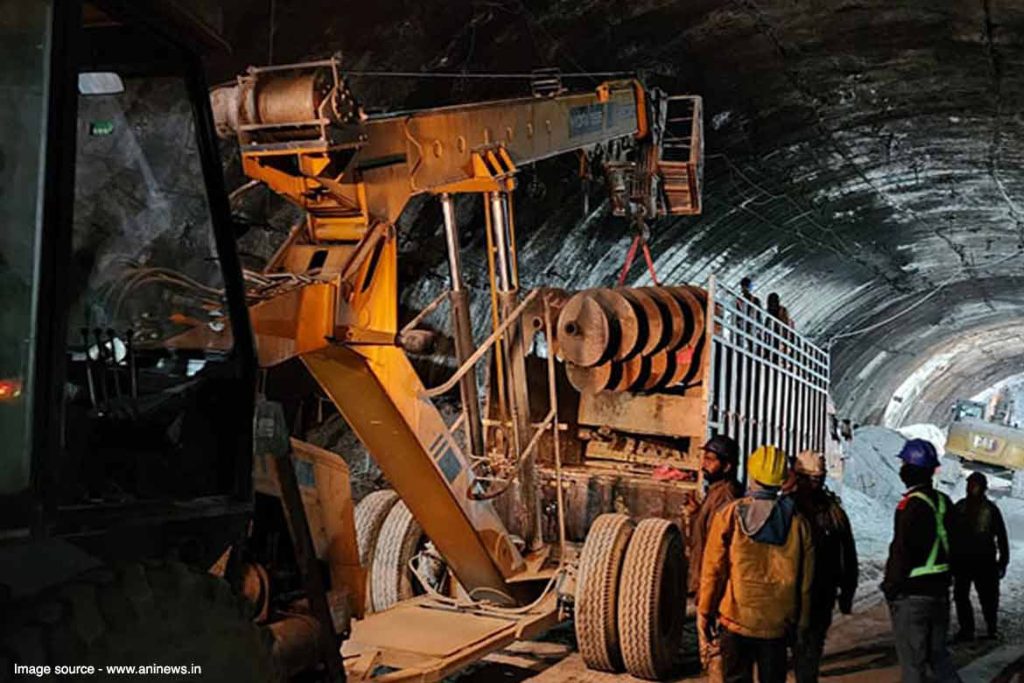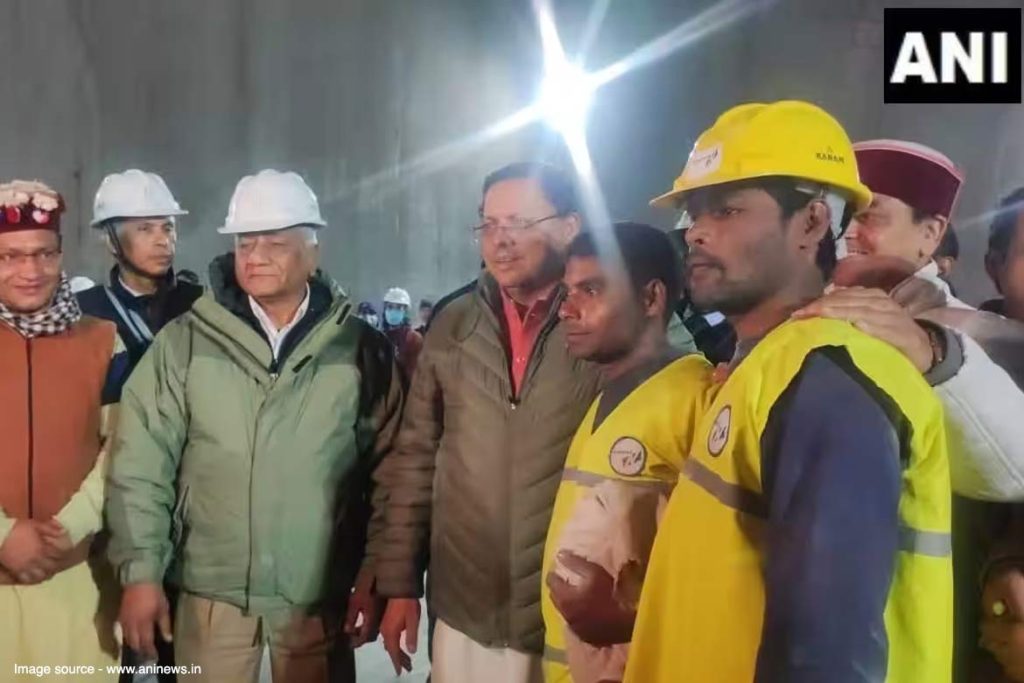On November 12, 2023, a massive landslide triggered by heavy rains hit the Silkyara-Barkot tunnel in Uttarakhand, India, where 41 workers were constructing a highway project to connect the holy sites of Yamunotri and Gangotri. The workers were trapped inside the tunnel, with no communication, no oxygen, and no hope of rescue.
For 17 days, they endured darkness, hunger, thirst, and fear, while the rescue teams faced multiple challenges and setbacks to reach them. On November 28, 2023, in a miraculous turn of events, all 41 workers were rescued alive and brought to the surface, where they were greeted by their families, government officials, and the media.
The Struggle for Survival

Trapped in the 4.5 km tunnel, migrant laborers from across India faced darkness, hunger, and suffocating conditions. The collapse severed their oxygen supply, intensifying their predicament. Yet, amid despair, they displayed resilience. Rationing limited food and water, burning makeshift fires for warmth, practicing yoga and meditation, and maintaining a semblance of normalcy through shared stories, dreams, and camaraderie—they clung to hope.
Ingeniously, they devised a communication system using Morse code-like signals and flashlights, bridging the gap between despair and the outside world. They conveyed their names, numbers, health conditions, and food and water requirements to the rescuers, who responded by sending back reassuring messages and instructions.
The Herculean Rescue Effort

A coordinated rescue mission unfolded, involving the National Disaster Response Force (NDRF), State Disaster Response Force (SDRF), Indian Army, Border Roads Organisation (BRO), National Disaster Management Authority (NDMA), and private contractors. Under the supervision of Chief Minister Pushkar Singh Dhami, the operation faced monumental challenges—debris, mud, water, and the constant threat of triggering more landslides.
They had to work cautiously and carefully, without compromising the safety of the workers and themselves. They also had to deal with the emotional stress and pressure of the situation, as they knew that the lives of 41 people depended on their efforts.
The rescue operation finally succeeded on November 28, after 17 days of relentless work. The rescuers managed to drill a hole through the top of the tunnel, and inserted a pipe through which the workers could crawl out one by one. The workers were wearing helmets, harnesses, and oxygen masks, and were assisted by the NDRF personnel.
They emerged from the tunnel, dazed and smiling, to the cheers and applause of the rescuers, the families, and the media. They were taken to a nearby hospital for a medical check-up, and then to AIIMS-Rishikesh for further treatment. None of them were critically injured or infected, and they were expected to recover soon.
Celebrating Resilience, Demanding Accountability

Read more: World Affairs: Top 5 International News of This Week
The nation celebrated this tale of survival, recognizing the spirit and teamwork that defied the odds. Prime Minister Narendra Modi commended the workers and rescuers. Chief Minister Pushkar Singh Dhami, in an extraordinary gesture, celebrated the ‘Igas Bagwal’ festival with the workers’ families, announcing compensations and acknowledging the heroes.
However, this extraordinary saga also prompts reflection on environmental concerns and the need for responsible development in ecologically fragile regions. The approved tunnel project faced scrutiny from environmental experts, raising questions about its impact on the delicate Himalayan ecosystem. Investigations into potential negligence and safety violations are underway.
In the face of adversity, the rescue of 41 workers from the Uttarakhand tunnel stands as a testament to human courage and unity. It’s a story that captivated hearts, symbolizing hope, resilience, and the triumph of the human spirit against all odds.
